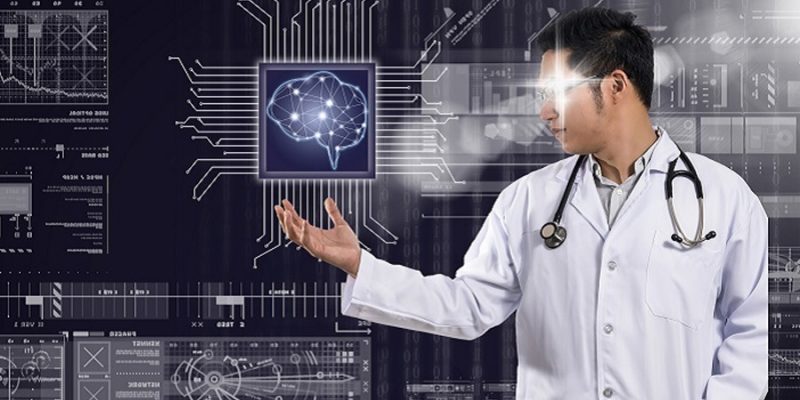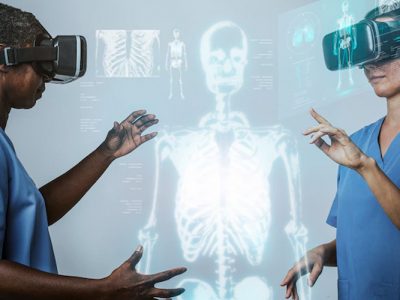
Advances in AI and deep learning algorithms paving new ways for the health care industry towards success.
We all are more or less aware of how artificial intelligence is useful for the healthcare sector and how it is contributing to increasing their productivity. We might not be aware of various AI algorithms used in almost every field. The healthcare industry is not much behind. Healthcare industries are largely using machine learning algorithms for better working conditions for professionals and providing good treatment to the patients.
Let us look at some top AI algorithms in the healthcare sector:
Logistic regression
Logistic regression is an AI machine learning algorithm used to estimate the relation between categorical dependent variables and binary variables. It is mostly used for detecting events such as disease risk management and help doctors make medical decisions. They help the medical institutions to target patients with more risk and provide them behavioural health plans to improve their lifestyle and daily habits. It is a very popular algorithm for modelling dichotomous. Used to obtain an odd ratio when more than one explanatory variable is present. Professionals use logistic regression to assess the risk of hypoxemia and its impact on the body.
Naïve bayes
Naïve Bayes is also AI machine learning algorithms based on the Bayes theorem. This is widely used in the healthcare sector for medical data clarification and for the prediction of diseases with more accuracy. This algorithm is used for performing sentimental analysis for understanding the positive and negative reviews of the patient. Naïve Bayes has largely been used by the medical institution for obtaining better knowledge in choosing which drug might provide more benefit and give fewer side effects.
Support vector machine
Support vector is a machine learning algorithm that is widely used in the healthcare sector. It is best known for detecting chronic diseases like heart-related disease and diabetes. It is very helpful in detecting diabetes and pre-diabetes symptoms in people and also allows doctors to make treatment plans accordingly. SVM also helps in detecting serious heart problems in patients who require immediate medical attention and hospitalization or even cause death. This approach might be further used in the future to explore other common diseases using a common variable.
Deep learning
Deep learning is a type of machine learning which uses algorithms and data analysis. It is a neural network with multiple layers. It is very important in data processing because it gives more accurate data, taking an idea from previous results for making necessary corrections and analysis. Deep learning algorithm takes into consideration both machine learning and natural language processing tasks. Deep learning works with biological neurons that connect one another to transfer information to the brain. The electric signal travels across living cells, providing stimuli to a subsequent layer of nodes from its neighbouring neurons.
Artificial neural network
An artificial neural network is a deep learning algorithm used for the diagnosis of different types of brain tumours, lungs diseases and many more. Pathologists use it widely for biochemical analysis. It is divided into 2 parts: Convolutional neural network (CNN) and recurrent neural network (RNN). Both of the parts help doctors to know more about the disease even before the symptom arises. CNN is playing an important role in several screening procedures because it is best suited for multi-class classification problems and binary classification. While RNN has proved to be very useful in terms of pattern recognition in medical time series data analysis.
Neural Networks
A neural network is an algorithm used in the healthcare industry for using biomedical techniques for a better outcome. It is widely used to diagnose various diseases through biochemical analysis, image sensing and developing drugs and medicine for particular diseases. A neural network is best known for its work in breast cancer prediction through mammographic imaging. A neural network is primarily made up of neurons that are connected to the nervous system and central nervous system.
Random forest
Random forest is a popular algorithm method used to analyse cancer especially breast cancer. It helps in constructing multiple training trees for carrying out classification and regression. It helps to overcome the problem of decision trees overfitting. It is used for analysing the risk of chronic disease and analysis of ECG and MRI analysis. For the classification task, the output of random forest is selected by most trees while in the regression task the average prediction of the individual trees is returned.
Discriminant analysis
Discriminant analysis is a machine learning algorithm. It is used for analysing object classification in relation to providing one objective to a single or many groups. This is generally used to diagnose diabetic peripheral neuropathy. Various features like blood vessel images are used in the diabetic analysis in the various healthcare sector. It is also used for keeping electronic health records, risk management systems and also in detecting signs of mental health disorientation. It is best suited for metabolic profiling data.
Natural language processing
Natural language processing is used in healthcare for transforming unstructured and incomprehensible narrative text like laboratory reports, discharge summaries, physical examination, operative instructions etc into proper structure. It helps in understanding quality, improving methods and providing better results for patients. It identifies a lot of disease-related keywords based on a historical database after the structured data is used for clinical decision making.
TF-IDF
TF-IDF stands for term frequency-inverse document frequency. It is an algorithm method for extracting keywords. It is a statistical measure of word importance to a document in a collection or corpus. In healthcare TF-IDF is used in several medical research works and helps in discovering diseases, making roper medical reports and finding sequential patterns in the database. TD-IDF uses text mining and user modelling for information retrieval.



















